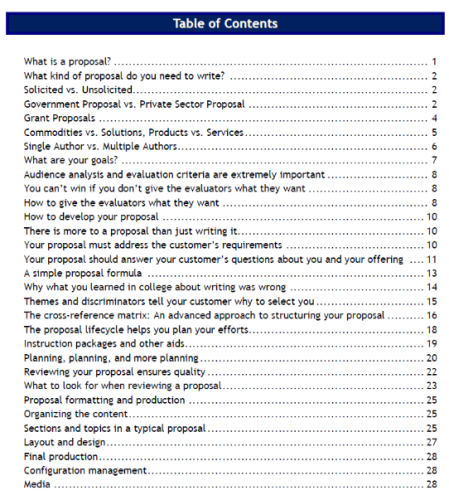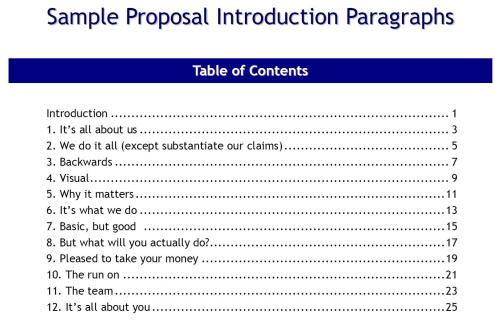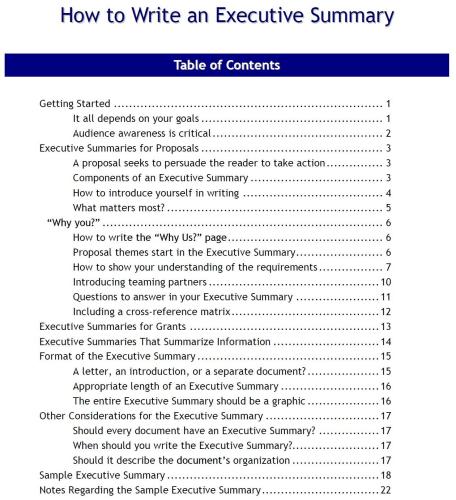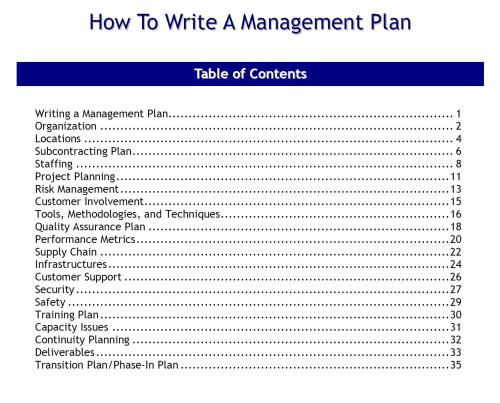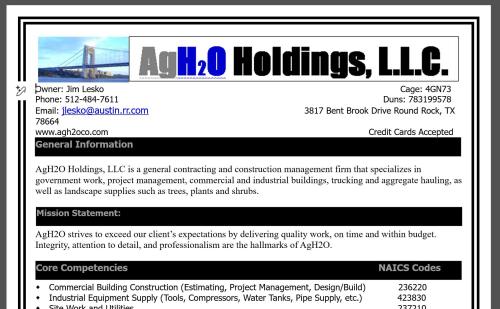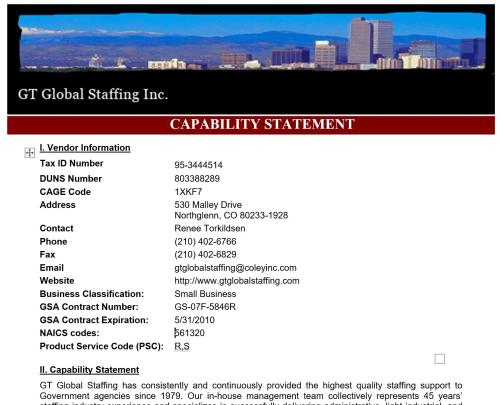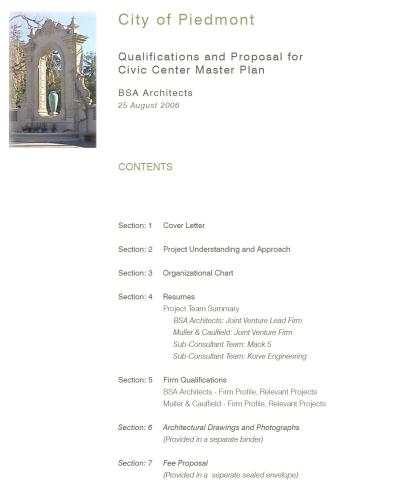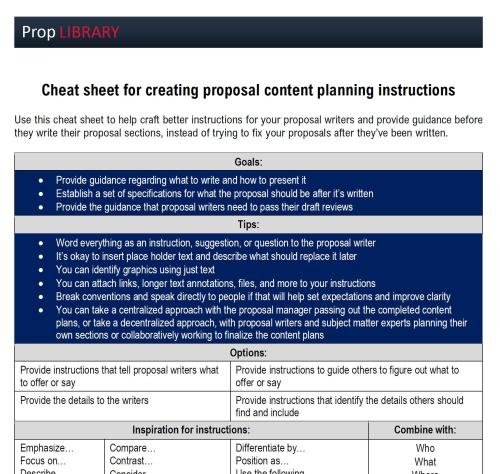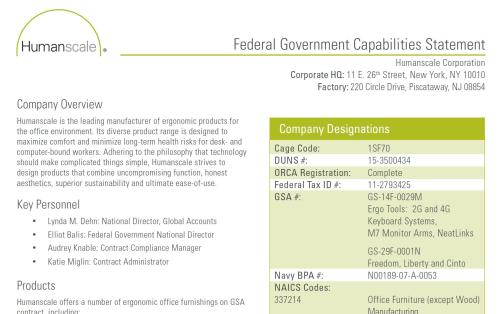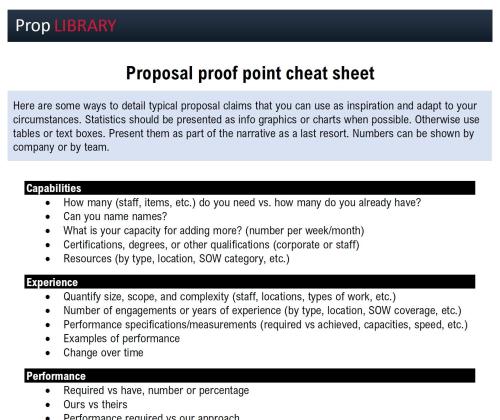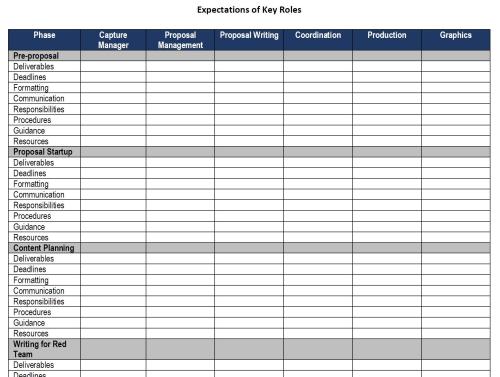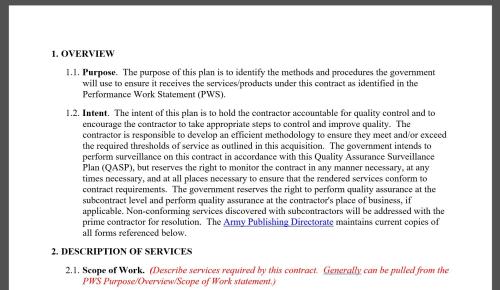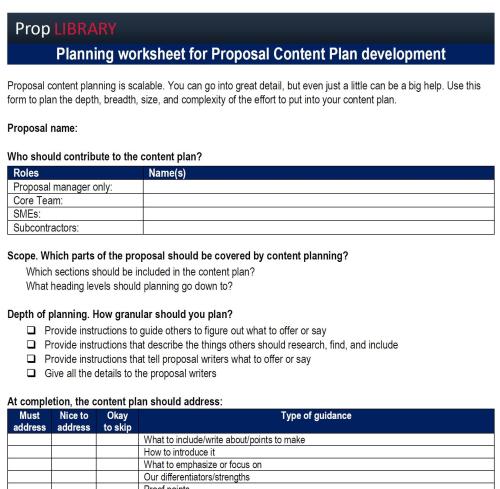Everything posted by Carl Dickson
-
What does it really mean to be RFP compliant in a proposal?
That is a bit too specific. But I also I suspect that it will vary by region and possibly other factors. Some things to consider: How low is your overhead compared to your competition? Do you have any advantages like proximity that could impact delivery costs? Are you supplier costs the same or lower than your competition? This is a bit off the topic of the article where it's posted. Normally I'd move it to our B2G forum, but since you're not a subscriber yet I'll probably move it to the Pre-Purchase Q&A forum and we can discuss it further there. As a subscriber you can get notified of replies.
-
What does it really mean to be RFP compliant in a proposal?
I love that you described being enamored with strict compliance as a buzz-kill because 100% compliance is simply not possible when the RFP is subject to interpretation. And they all are. Some a lot more, some a little less. The problem with people who obsess over compliance and demand it, is that they are asking for the wrong thing. it's like asking for risk to be eliminated when it can only be mitigated. And then failing to manage the risk. Aiming for 100% compliance means that what you write will overemphasize some things that don't matter to the customer. And in a page limited proposal, this means you will be underemphasizing some things that do. Understanding what matters to the customer is so valuable. But even when you aren't sure, you still need to try to prioritize by what you think might or should matter to them. An absolute view of compliance gets in the way of doing that. Compliance is near the top of what matters to the customer, but what they consider compliant is not absolute. And it is often, and dare I say usually, not the most important thing to them. Everyone who makes the competitive range will be sufficiently compliant. One you get there, compliance no longer matters. It's human nature to be afraid of small risks with big consequences. You have to overcome that to write proposals with an emphasize on winning instead of not getting blamed.
-
How do you demonstrate thought leadership in a proposal?
Thanks. I can't remember whether i used the words or not, but I agree with them. Customers are unintentionally tricky. They ask you to describe things when what they really want, and even more importantly what they reward, are explanations.
-
8 things great proposal writers do differently
You make a good point. Proposal writing is more like cooking than art. There's preparation involved. You have to gather and assemble your ingredients. You can't just make up greatness. The thing about roles is that you need to understand who they fit together. On a one-person proposal, all the roles still have to be fulfilled. You just have to do them all yourself. On a bigger proposal, there will be others, but they still fit together in expected ways.
-
The new PropLIBRARY has been launched and has a lot of new toys to play with
What can you expect?You can expect more. We’ve added a community on top of the massive amount of content we’ve created. We’re also opening up our platform to other authors. So over time you’ll see a lot more online training and events posted. Service providers, consultants, and trainers will be available to you. All of it is delivered in an updated, easier to use interface. This was a massive refresh. The online training has also been updated, and the downloads are more accessible. An all-new events calendar has been added. PropLIBRARY is now far more engaging, with discussion and networking features wrapped around our content. You can discuss our articles or start discussions of your own. You’ll want to become a member. Here’s why:How do you beat AI-written proposals? Bring insight and intelligence that isn't available online. We’re bringing nearly all of our content inside the paywall so that AI bots can’t steal it and to give you a competitive advantage. Access to our exclusive content is not going to be available via web searching or AI. Becoming a PropLIBRARY Insider will help you create AI-written proposals that will beat all the other AI-written proposals. To help you make this transition, we’ve created a low-cost subscription option that’s 80% lower than anything we’ve ever offered before. It gets you inside the paywall so we can engage further. We even have a way that you can get your subscription free of charge by making referrals... What's the first thing you should try once you’re inside?I couldn’t narrow it down to just one. Meet other professionals, share insights, and learn from each other. Network. Find resources. Get hands-on help with your pursuits. Try commenting on your favorite articles. Or asking a question about one. If you have a topic or question of your own, try starting a discussion. When you see an article of interest, try clicking on one of the tags below the description. They immediately filter our content down to the topic of the tag you clicked on. This is great for focus and relevance. The second thing you should try after posting is all the new Activity Stream options you have. They make following conversations and staying in touch with other people much easier. Remember, if you don’t send messages, you won’t receive any. Here’s the easy way to post: Ask questions Make observations Tell a story Share an insight Reply to someone else’s post If you are a consultant, let’s talk…You can now publish on our platform and get in front of our huge audience. You can post your events. You can create and sell online training. You can tap into our audience collective. Reach out to us for more details. How we’re celebratingWe’re going to throw a party. It’s a virtual thing. It’s going to be a posting party. We’re going to get to know each other and interact as people while posting questions and comments about mostly professional things. Let’s have fun with this! We might make it a regular thing. Here’s the format: We’ll be hosting it on Zoom webinars, but it’s not going to be a presentation. It’s going to be casual. Bring cocktails, snacks, or whatever makes you comfortable. We’ll have our cameras off, so we can be real. We’re going to have a series of topics that we’ll post on. Everyone will be expected to post something. And then we’ll reply to each other’s posts. All while talking and keyboard chatting in a casual way with a low-key party vibe, about anything besides work. The topics will be: Networking so people think we’re being professional. We’ll post about what kinds of people you’d like to network with and where we work. We’ll get to know each other and meet new people without it having to be a big deal. What kind of stupid things have you caught AIs doing? This will be a fun take on a hot topic. Comparing and contrasting B2G, B2B, and International proposals so we can all get out of our box and risk learning from someone who does things completely differently. Service providers, consultants, trainers, products, tools, and associations. They are resources. They also happen to be people too. The party will be in the evening (7:30pm GMT-5) in North America, and the rest of the world will probably be sleeping. We’re thinking about scheduling something on another date and a better time for people on other continents so you don’t miss out on the fun. Register for the Posting Party! If you can't make it, you can still subscribe, become an insider, and post when you are available.
-
I'm an expert consultant. Is PropLIBRARY worth it for me?
Give value to get value. Demonstrate expertise instead of claiming it. I share overshare insights and approaches. I don't claim to be "one of the world's top experts in proposals". I write about proposals and let the reader decide. After I've given value, when it's time to sell I offer. I don't use consumer marketing practices on business customers. I don't advertise to them, I let them know where they can get more of what I've shown. I invite them. Everyone who is a PropLIBRARY Insider chose to accept the invitation so that they could be part of conversations like this.
-
The new PropLIBRARY is live!
Welcome to the newly upgraded PropLIBRARY. We are still testing, cleaning up some loose ends, and reformatting a few things, especially in the Online Training area. We've got about a week's worth of work to do, but it's on stuff that hopefully you won't even notice. If you are a guest, you will be able to see what content is here, but you won't be able to open things. If you are a subscriber, you should find the content is much easier to navigate, filter, and search. But most importantly, every article can now be discussed. And we have a separate area for discussions and networking. If you want to help out, then before you leave please post a comment in a forum or on an article. You get extra credit if you're the first to post! Thanks!
-
I'm an expert consultant. Is PropLIBRARY worth it for me?
For consultants, PropLIBRARY is mostly about: Content marketing to potential customers Ongoing career and personal development, because you can never be expert enough and need to keep up with the times If you are an expert, then you already understand the importance of ongoing development. So let's talk about marketing to potential customers. Someday we might allow advertising, but that's not what we're really about. What we're about is engagement. Being able to network and engage in a sheltered space with people who are all interested in proposals, business development, and capture is much better than advertising if those are your potential customers. We recommend that you: Take a step back from selling Focus on demonstrating your capabilities and expertise instead of claiming it Embrace the idea of an audience collective So let's talk about the audience collective because it's a big deal. You may have an audience. We have our existing audience. Both the combined total of everyone else's audience dwarfs both of us. What if we all contribute to the audience? There is some advantage to you in having some of your audience on the site to engage with. It will help you achieve engagement with people you meet. There is also advantage in associating with quality people. We have set PropLIBRARY up so that when you refer people, it can be tracked. And you get rewarded for referring people. Depending on the number of referrals, this could be a little bonus or a major source of revenue. But revenue isn't the point. The point is to recognize participants who contribute to the audience collective. We will be doing this actively and it's probably worth more than the referral revenue share. Since you may be wondering for each person you refer who subscribes for 3 months, you'll get credit for one month. Refer 12 subscribers and a year of subscribing to PropLIBRARY is free of charge. Refer 1200 subscribers and the Make 1,200 referrals at the Premium level and the cash-out value to you would be $38,400. However, getting recognized on our site and in out newsletter for being a top referrer could be worth even more than that if it brings you new clients. There are also opportunities here: To demonstrate your experience through discussions on PropLIBRARY Publish articles and get in front of the audience Publish ebooks, presentations, or other files and charge what you will for them Create online courses and sell them to the audience The advantage of putting your online training here is the audience. You have just as many opportunities to get in front of the audience here as we do. If our approach to building an audience collective is successful, then consultants like you could earn more on PropLIBRARY than we do from hosting it. And because an audience collective creates an audience far larger than our own, if that happens we will be quite happy with the outcome. This post is plenty long enough. Feel free to ask questions, drill down to specifics, or move the discussion in the direction you want it to go.
-
I work for a company. Is PropLIBRARY for me?
PropLIBRARY is about two things: Improving your win rate Networking and engaging with other professionals who have similar interests The majority of our customers are companies that do business with the government (B2G) and companies that do business with other companies (B2B). In both cases, it's mostly companies that win business through competitive proposals or who are interested in best practices for maximizing their business capture rate. Some of our customers are consultants, service providers, or product companies. They also have an interest in improving win rates, whether it's their own or their customers' win rate. On PropLIBRARY, you can network in both groups, find resources, and learn from many different perspectives. We cater to both, focusing on topics like career development and process implementation for people who work at companies and on building an audience collective with consultants. We very carefully manage the value in being able to discover resources and the desire to be able to discuss how to do things without being sold to. There is a place for both and that's how we've organized things. Feel free to ask a follow up, or even a completely different question that this may have inspired.
-
Example of Cross-Reference Matrix Creation
Cross-reference matrix creation sounds complicated in text. View this slide show to see how it works.
-
Introduction to creating a cross-reference matrix
Creating a compliance matrix sounds complicated in text. View this slide show to see how it works.
-
A Better Way to Figure Out What Should Go Into Your Proposal
- 5 downloads
- Version 1.0.0
A manual we published to help people implement Proposal Content PlanningFree -
How to Survive Your First Business Proposal
- 5 downloads
- Version 1.0.0
Before we wrote the MustWin Process Workbook, we published a series of tutorials that included "How to Survive Your First Business Proposal."Free -
Sample Proposal Introduction Paragraphs
- 4 downloads
- Version 1.0.0
Before we wrote the MustWin Process, we wrote a series of tutorials that included "Sample Proposal Introduction Paragraphs."Free -
How to Write an Executive Summary
- 4 downloads
- Version 1.0.0
Before we wrote the MustWin Process Workbook, we created a series of tutorials that included "How to Write an Executive Summary."Free -
How to Write a Management Plan
- 4 downloads
- Version 1.0.0
Before we wrote the MustWin Process Workbook, we wrote a series of tutorials that included How to Write a Management PlanFree -
AgH20 Capabilities Statement
-
GT Global Capability Statement
-
Sample Architecture Proposals
- 0 downloads
- Version 1.0.0
Sample Proposals for the City of Piedmont Qualifications and Proposal for Civic Center Master PlanFree -
Proposal Content Planning Cheat Sheet
- 10 downloads
- Version 1.0.0
For use during Proposal Content Planning. Provides inspiration for what to include and how to articulate it to guide proposal writers to create the desired proposal.Free -
Humanscale Capability Statement
-
Proposal Proof Point Cheat Sheet
- 8 downloads
- Version 1.0.0
Proof points are vital for winning proposals. But asking people to "insert some proof points" often falls flat. This cheat sheet can help inspire people to supply relevant proof points.Free -
Role Based Expectation Matrix
- 3 downloads
- Version 1.0.0
This matrix enables you to quick document what is expect of each role supporting a proposal through each phase of proposal development. When you view across the roles you can see how the team works together to accomplish each phase.Free -
Quality Assurance Surveillance Plans
- 4 downloads
- Version 1.0.0
These templates are to assist contractors in completing their Quality Assurance Surveillance Plan (QASP).Free -
Proposal Content Planning Worksheet
- 3 downloads
- Version 1.0.0
What should you put in your content plans? How should you articulate the things you include? Who will be involved. For individuals, this worksheet provides inspiration. For groups, it helps set expectations.Free



